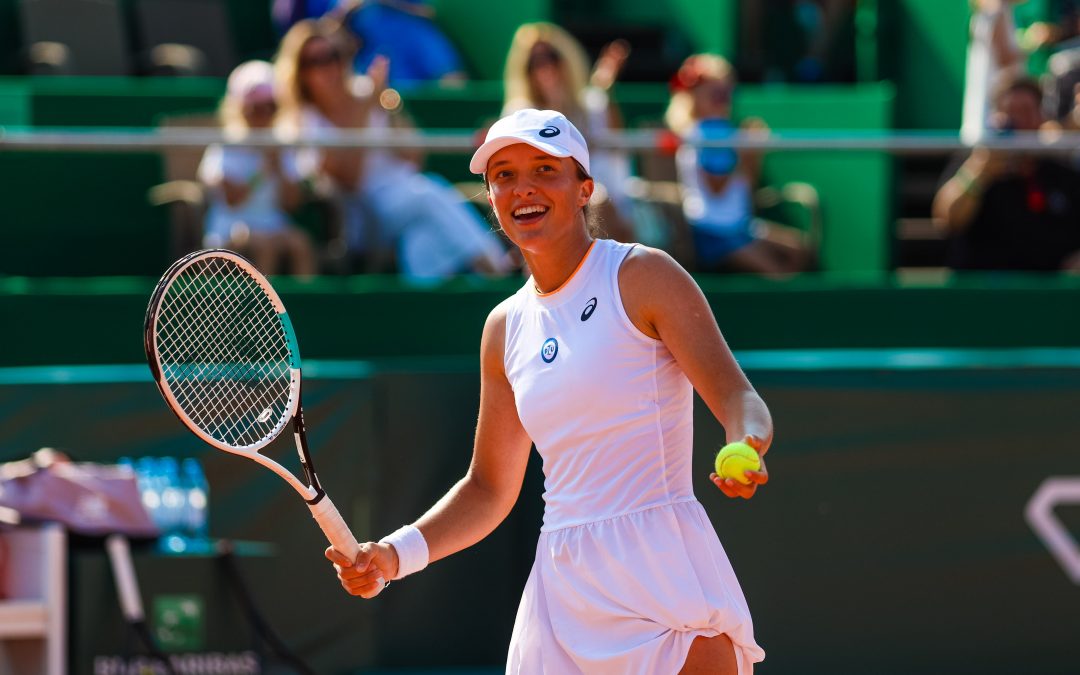By Mateo Szlapek-Sewillo
Her final move was as dynamic as those preceding it. When the line judge’s call confirmed her opponent’s shot had sailed long, Iga Świątek pirouetted toward her team while sinking to her knees in triumph. She had done it. Her 35th consecutive victory brought a second French Open title and decisive confirmation of her status, at just 21, as the world’s most dominant tennis player.
To win the title, Świątek had to vanquish a talented and spirited opponent, the 18-year old American, Cori “Coco” Gauff. She also had to overcome the burden of great expectations. When she won her first French Open, 20 months ago, Świątek was ranked number 54 in the world and unknown to all except hopeful Poles and the most dedicated tennis fans. She decimated a field that, in truth, probably knew little about her game.
Polish Perfection in Paris 🇵🇱🏆#RolandGarros | @iga_swiatek pic.twitter.com/hYR9OR6xYH
— Roland-Garros (@rolandgarros) June 4, 2022
This year, however, Świątek came into the tournament as the world number 1 who had won the last five tournaments she had contested. Many pundits predicted she would face no real challenge in Paris. But tennis does not work like that. One bad day, or even a good day against a strong opponent, can be the difference between victory and defeat, success and failure.
In truth, this was not a straightforward tournament. Świątek has played better. There were moments where she seemed inhibited by the expectations – both her own and those of a nation who have found a new sporting idol. But she decisively overcame every challenge in her way. In her final three matches, Świątek lost only 12 games. The final lasted barely an hour.
After the Australian Ash Barty’s shock retirement in March, Świątek has moved incredibly quickly to fill the void left at the top of the women’s game. With due respect to her improving serve and excellent backhand, there are three elements to Świątek’s play which elevate her above her rivals.
The first is her forehand. Combining huge power and extreme spin to overwhelm opponents, it is a truly fearsome shot. It is not unusual for her to record higher speeds and RPMs (revolutions per minute) than her male counterparts.
The second is her incredible athleticism, which allows her to turn a defensive position into a point-winning one in the blink of an eye.
The third is her mental resilience. Tennis is a psychological sport. That is even more true in the women’s game, where shorter matches mean a nervous start can mean you are halfway to defeat in 20 minutes. Matches – careers – can hinge on the outcome of individual points. No one is better at them than Świątek, an expert in-match problem solver who has pioneered the use of a full-time sports psychologist on tour.
🗣 “My psychologist is travelling with me.”
🇵🇱 Iga Swiatek joined @babsschett in the Cube to speak about her success at Roland-Garros so far#RolandGarros | @iga_swiatek
— Eurosport (@eurosport) June 2, 2022
In these regards, she is so much like her idol, the great Spaniard, Rafael Nadal. Her obvious admiration for him and tendency to bring him up unprompted is one of the few reminders that, in addition to being the world number 1, she is also a young woman living her dreams on the world stage.
Elements of Świątek’s game are also inspired by Agnieszka Radwańska – herself a former Grand Slam finalist – and Angelique Kerber, a German player of Polish heritage.
*gasps in Polish* pic.twitter.com/IHu099AULT
— wta (@WTA) June 4, 2022
But Świątek’s success is all her own. As an emerging player, she did not have the benefit of elite training facilities or generous wildcard entries to tournaments that are freely given to players from more established tennis nations.
In a social media post following her victory in Paris, Świątek said that an important part of her journey has been learning that the only thing in her control is how hard she works. This year, that hard work is paying off handsomely.
View this post on Instagram
Perhaps the only thing more impressive than Świątek’s tennis is her character. In matches, she has learnt to harness the emotions that, as a younger player, occasionally consumed her in matches.
Off the court, she is open, thoughtful, and mature. As recently as her run to her maiden French Open title in 2020, she was contemplating university studies. Following a difficult defeat at last year’s World Tour Finals tournament in Mexico, Świątek said that premenstrual syndrome may have affected her ability to play her best – a brave admission of a physiological reality that is still largely taboo.
A top female tennis player opens up about the premenstrual syndrome #PMS affecting her performance.
As a psychiatrist, regularly seeing patients with PMS & premenstrual dysphoric disorder #PMDD, I commend & respect @iga_swiatek. It's time to talk about ithttps://t.co/WBfF76YJGe
— Jacek Debiec 💙💛 (@DebiecJacek) November 14, 2021
She has also been publicly vocal in her support for Ukraine following Russia’s invasion. In every match Świątek has played since the war began (all of which she has won), she has worn a Ukrainian flag pin fastened to her white cap.
Standing on the winner’s podium in Paris, no doubt caught in a swirl of emotions, she still had the presence of mind to send a message of support to Ukrainians around the world.
Whether she knows it or not, Świątek is also challenging people’s preconceptions of Poland and Polish people. The world number 1 is also a typical, Westernised member of Gen Z.
She is comfortable speaking in English and as happy to discuss the books she is reading and the music she is listening to (Pink Floyd and AC/DC are favourites) as any person her age. Yes, these are normal things. But in a world where many people still view Poland as a somewhat alien place, they are meaningful. Świątek is presenting a youthful face of modern Poland to the world.
This year, the world has learnt a lot about Polish generosity. It is now also learning about Polish sporting excellence. The sky is the limit for Iga Świątek. But regardless of where her career takes her from here, Polish people should be proud they have such a brilliant role model. As for the rest of the women’s tennis tour: they should be very afraid.
Main image credit: Michal Ryniak / Agencja Gazeta





















